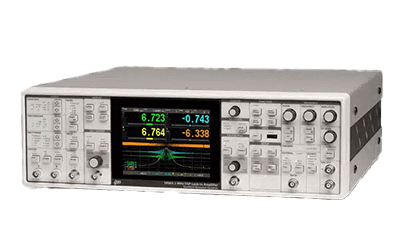What Is Microscope?

A microscope is an instrument for magnifying and observing microscopic objects that cannot be seen with the naked eye, using an eyepiece and an objective lens.
While some microscopes utilize fluorescence or lasers as light sources, the majority of microscopes use visible light.
Magnification ranges from several times larger to about 1,500 times larger. There are different types of biological microscopes and metallurgical microscopes depending on the object to be observed. They are used according to the light transmissivity of the target sample.
Biological samples that transmit light are observed using transmitted light, while metallic samples that do not transmit light are observed using reflected light. For this reason, light sources, lenses, and specimens are arranged differently for biological microscopes and metallurgical microscopes.
Uses of Microscope
Optical microscopes are widely used in various fields such as biology, medicine, food, semiconductors, and education, because they use visible light as a light source and can be directly observed by the human eye without light conversion.
Specifically, they are used in various tests such as blood tests, microbiological tests, dust tests, and integrated circuit tests, as well as in research and development applications in these fields.
Principles of Microscope
The principle of Microscope is simple: light is shone on the object to be observed, and the transmitted or reflected light transmitted through the object is magnified by the objective lens.
The magnification of Microscope is expressed as the product of the magnifying power of the objective lens and the eyepiece. The higher the magnification, the larger a small object can be magnified for observation.
Microscopes can be broadly categorized into two types based on their method of illumination: “transmission-type” and “reflection-type. The transmission-type is used for objects that transmit light, such as cells, bacteria, and other biological specimens. In contrast, the reflection-type is used for objects that do not transmit light, such as metals and semiconductors. There are two types of objective lenses: upright type, where the objective lens is positioned above the sample, and the inverted type, where the objective lens is positioned below the sample. In particular, the inverted type is used for samples cultured in petri dishes because it is necessary to look into the sample from below.
The optical magnification of microscope is determined by the magnifications of the objective lens and eyepiece. In addition to magnification, resolution and contrast are also important factors in microscope observation.
Resolution refers to the minimum distance (δ) at which two different points can be recognized as separate points. It indicates how much detail can be distinguished. In microscopes, resolution is determined by the numerical aperture (NA) of the objective lens and the wavelength of light (λ), and is expressed by the following equation:
δ = kλ/NA (k is a constant)
The numerical aperture (NA) is calculated by n × sinθ, where n is the refractive index between the objective lens and the medium, and θ is the maximum angle of the light ray incident on the objective lens relative to the optical axis.
Next, let us discuss contrast.
In recent years, in addition to staining and aperture adjustment, observation methods utilizing light scattering, diffraction, and fluorescence have been established under names such as phase contrast and differential interference. Microscopes specialized for these observation methods exist and are called phase contrast microscopes or differential interference microscopes. When cells are stained, the cells are dead, but phase contrast microscopes and differential interference microscopes make it possible to observe living cells.
Other Information on Microscope
1. The Difference Between Bright-Field and Dark-Field Observations With Microscope
When observing with microscope, the way you see the object depends on how the light is shined on it. There are three basic observation methods: bright-field observation, dark-field observation, and observation with oblique illumination.
Bright-field observation is the most basic observation method, in which the object is illuminated by light and the transmitted light is observed. It is mainly used to observe stained samples.
On the other hand, in dark-field observation, light is shone from directly below and scattered or reflected light is used for observation. This method is mainly used for observation of transparent objects that have not been stained or small objects.
Although staining the object is a fundamental requirement for bright-field observation, if the object is a living organism, there is concern that staining may kill it or impair its function, so the dark-field method is used.
Observation using oblique illumination is intermediate between these two observation methods. By illuminating the object from an oblique angle, it is possible to achieve an appearance intermediate between the bright-field and dark-field observation methods.
2. Immersion Objective in Microscope
Since the resolution of an optical microscope is inversely proportional to the number of apertures, a smaller resolution can be obtained by increasing the number of apertures. The aperture is proportional to the refractive index between the objective lens and the medium. The immersion objective lens uses this characteristic to obtain higher resolution by filling the space between the sample and the objective lens with a liquid with a high refractive index. The liquid used depends on the object to be observed.
An objective lens that uses oil as the liquid is called an “oil-immersion objective lens. Since oil has a higher refractive index than water, it has the effect of increasing resolution, and a brighter, sharper image can be obtained by using an oil-immersion objective lens. However, when observing an object with thickness or a gap between the sample and the cover glass, the image formed by the microscope will be blurred due to spherical aberration stemming from the objective lens, which is caused by the difference in refractive index between the object and the cover glass.
On the other hand, an objective lens that uses water as a liquid is called a “water-immersion objective lens. Water-immersion objective lenses are designed to produce the same image regardless of the thickness of the object. When observing a thin object, the oil-immersion objective lens provides a brighter and clearer image, but when observing a thick object, the water-immersion objective lens provides better performance.
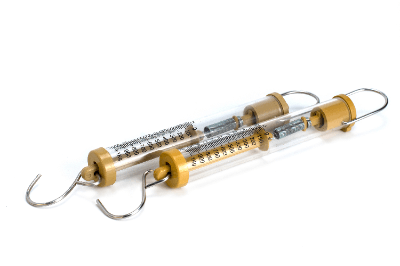


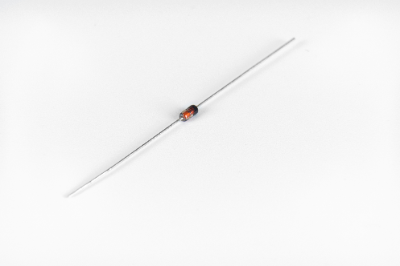 A PIN Diode is a diode with a true I-type semiconductor of high electrical resistance between the P-type and N-type semiconductors and a wide depletion layer.
A PIN Diode is a diode with a true I-type semiconductor of high electrical resistance between the P-type and N-type semiconductors and a wide depletion layer.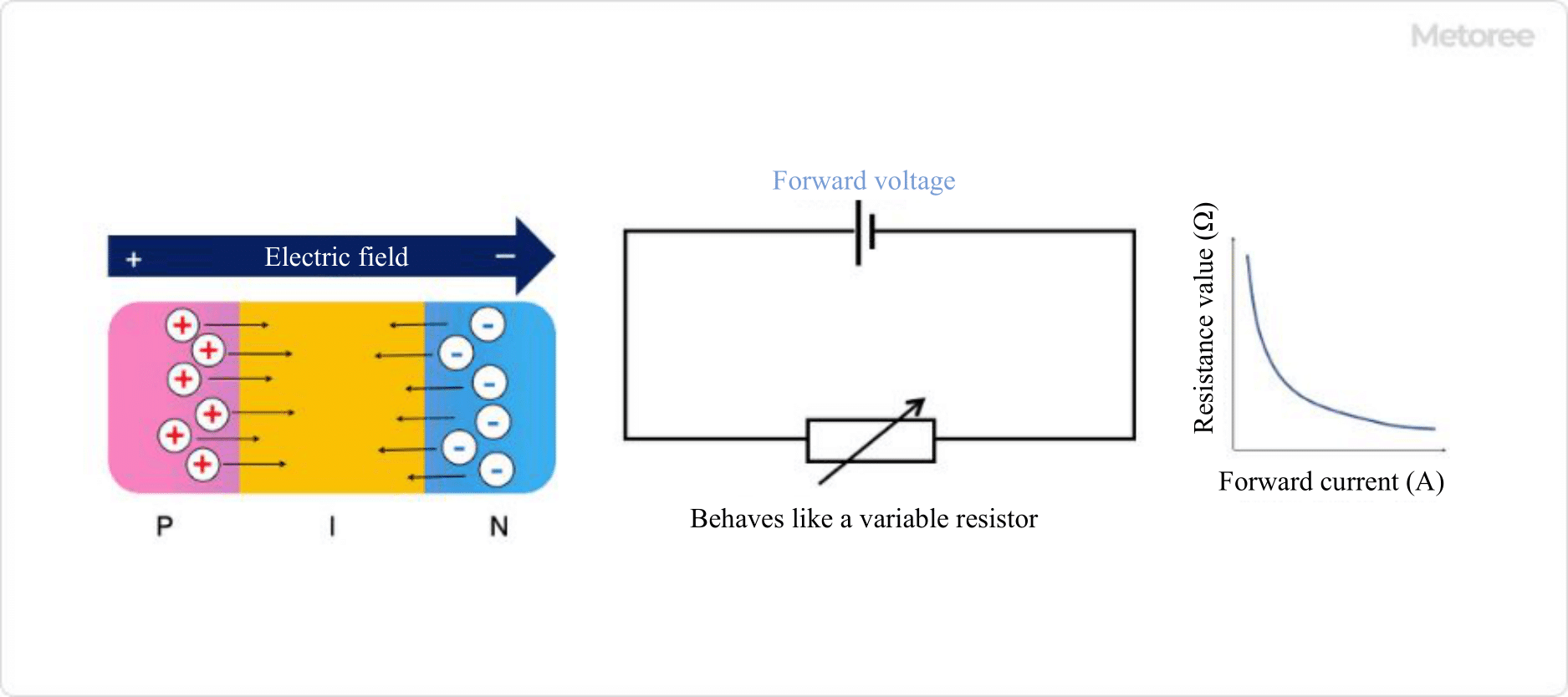


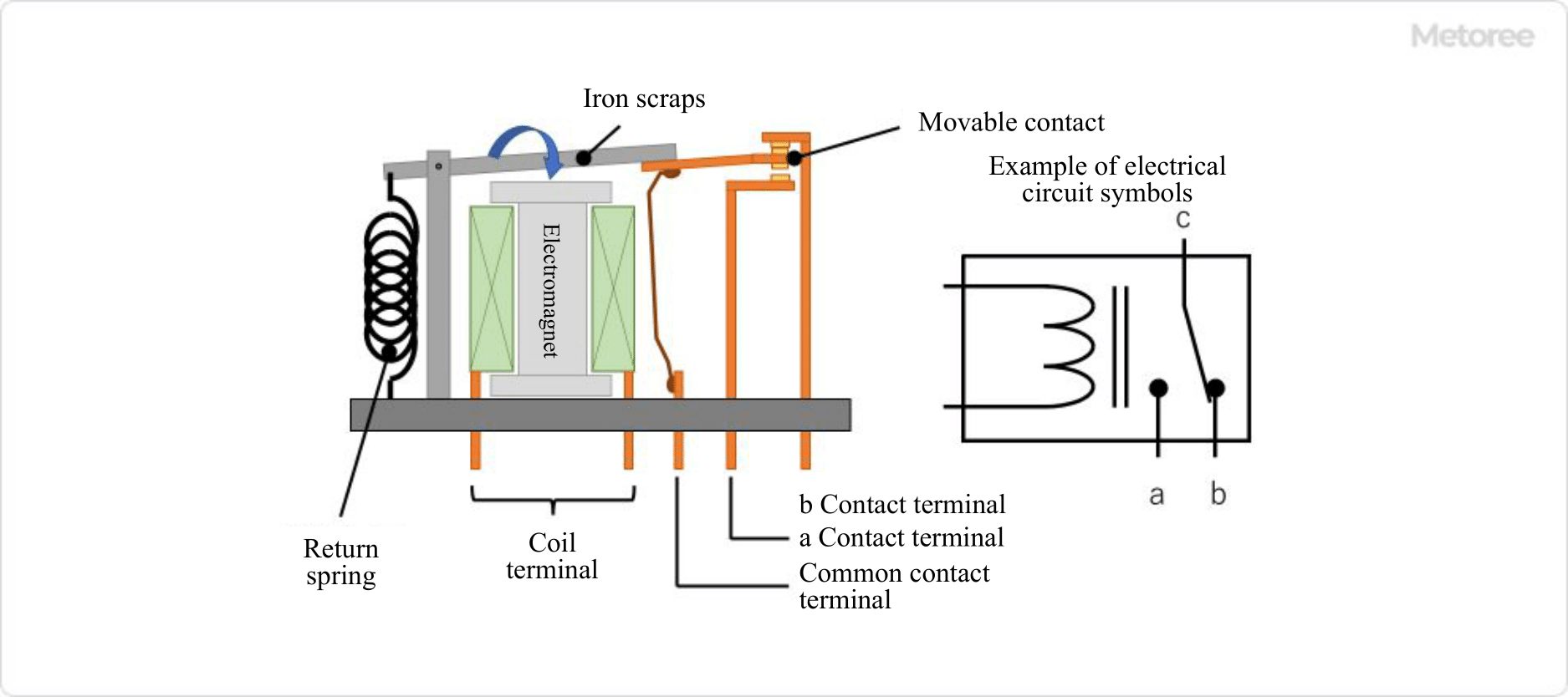
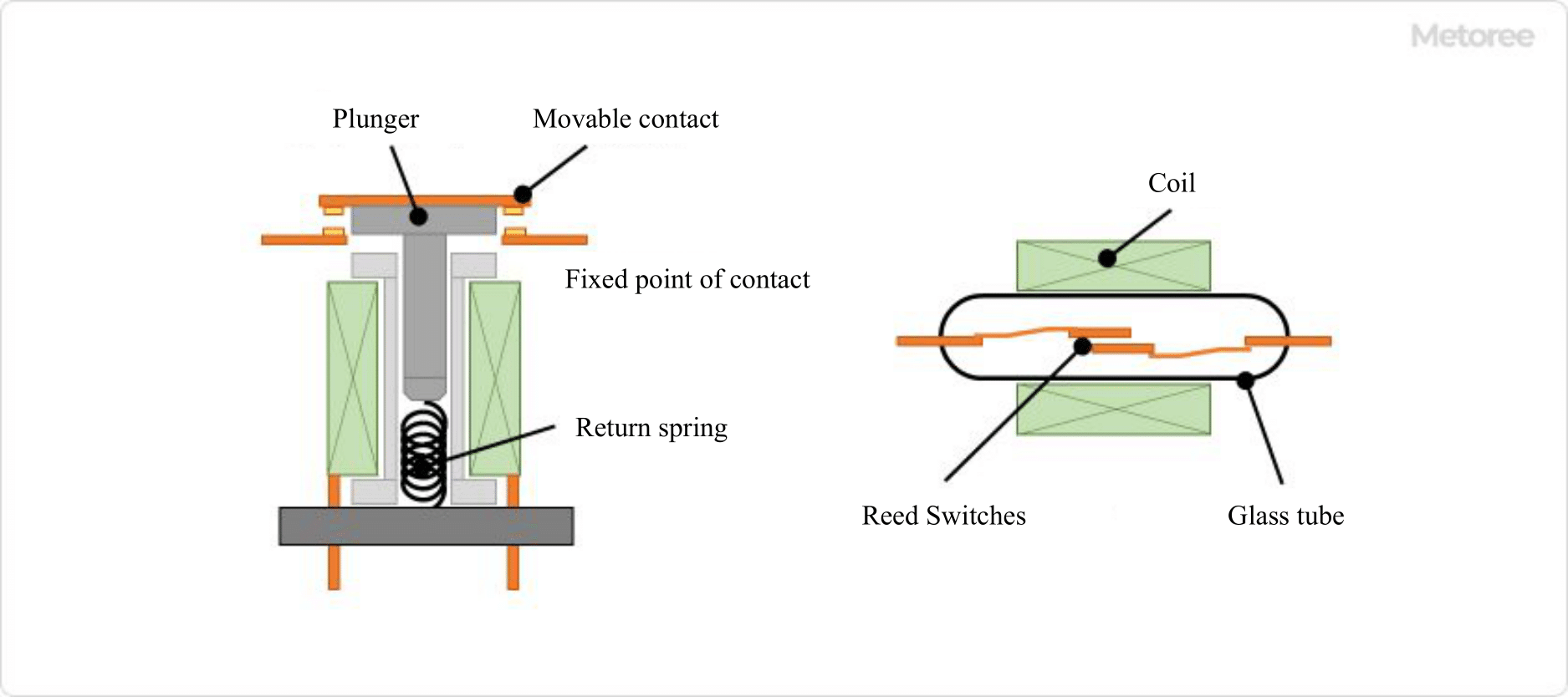
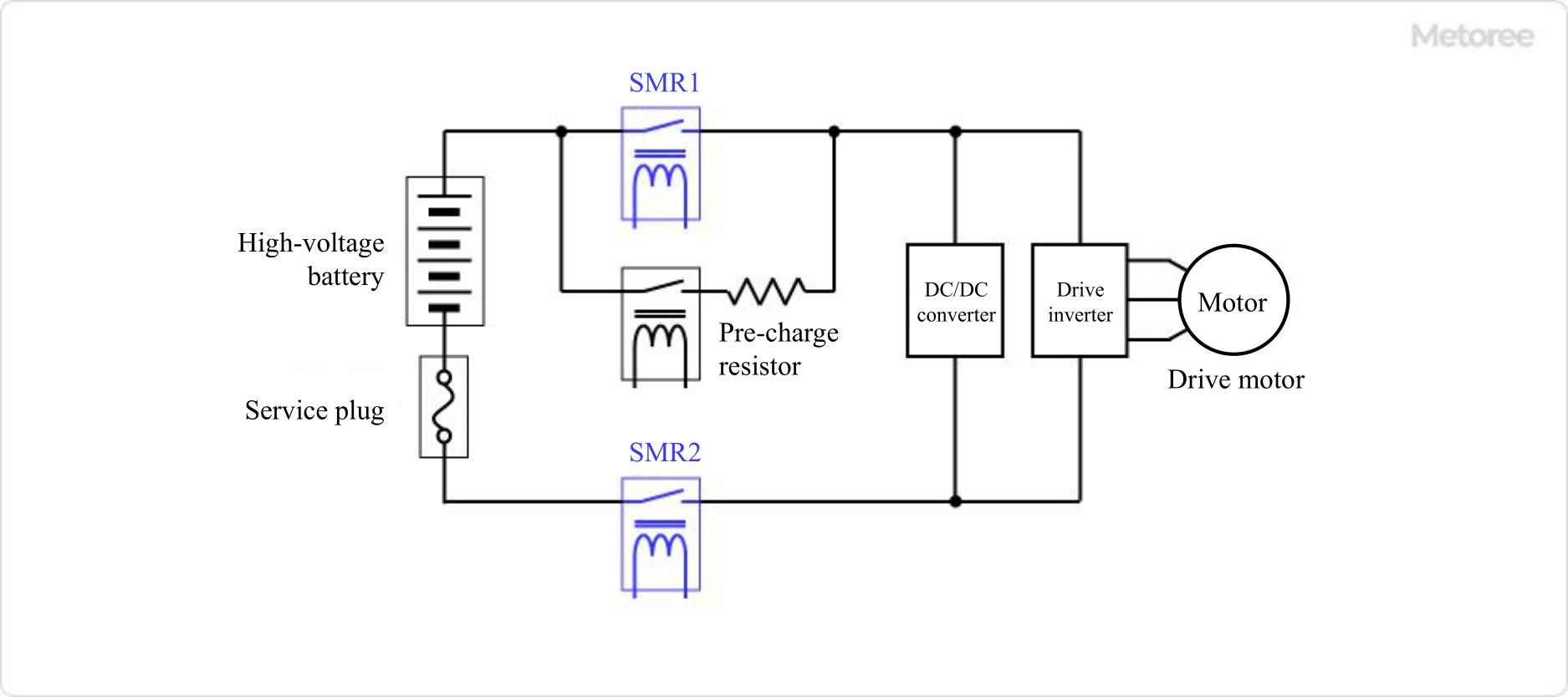
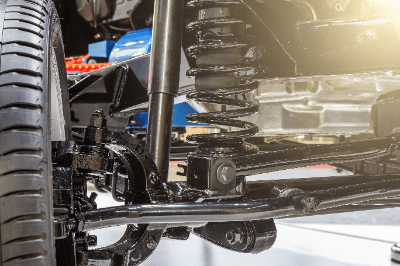 A shock absorber is a device that reduces vibrations in machinery and buildings.
A shock absorber is a device that reduces vibrations in machinery and buildings.